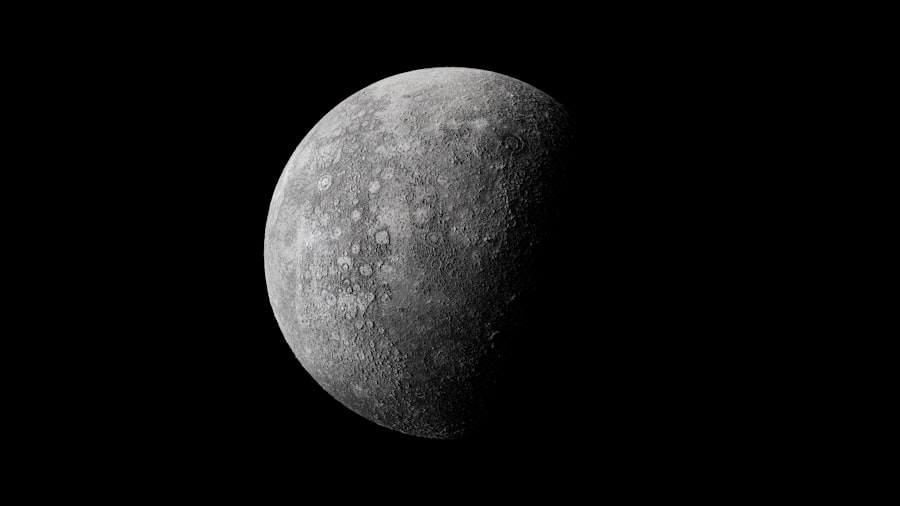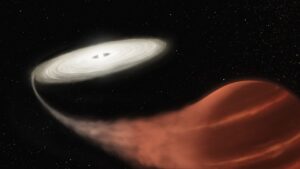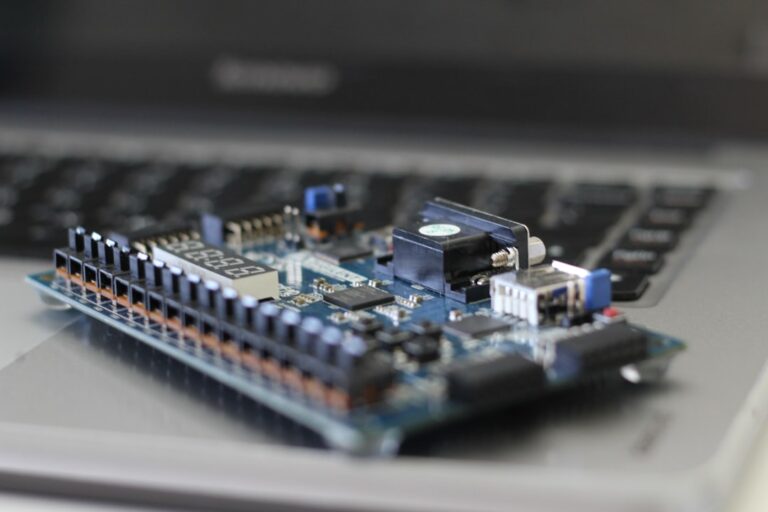Celestial mechanics is a branch of astronomy that deals with the motions of celestial objects and the gravitational forces that govern their movements. It encompasses the study of planets, moons, stars, and galaxies, as well as artificial satellites and spacecraft. The fundamental principles of celestial mechanics are rooted in Newtonian physics, which describes how objects interact through gravitational forces.
However, the field has evolved significantly over the centuries, incorporating advanced mathematical techniques and theories to address increasingly complex astronomical phenomena. The significance of celestial mechanics extends beyond mere academic interest; it plays a crucial role in our understanding of the universe. By analyzing the orbits of celestial bodies, scientists can predict future positions and movements, which is essential for navigation in space and for understanding the dynamics of our solar system and beyond.
The study of celestial mechanics also provides insights into the formation and evolution of planetary systems, the behavior of galaxies, and the overall structure of the cosmos.
Key Takeaways
- Celestial mechanics is the study of the motion of celestial bodies under the influence of gravitational forces.
- Historical development of celestial mechanics can be traced back to the work of ancient astronomers and mathematicians such as Ptolemy, Copernicus, Kepler, and Newton.
- The laws of celestial mechanics, including Kepler’s laws and Newton’s law of universal gravitation, provide the foundation for understanding the motion of planets, moons, and other celestial bodies.
- Celestial mechanics is applied in astronomy to predict the positions of celestial bodies, study the dynamics of solar systems, and understand the behavior of comets and asteroids.
- Challenges and unsolved mysteries in celestial mechanics include the precise prediction of the motion of celestial bodies over long periods of time, the behavior of dark matter and dark energy in the universe, and the dynamics of exoplanetary systems.
Historical Development of Celestial Mechanics
The Renaissance and the Shift to Heliocentric Models
However, these models were limited in their ability to accurately predict celestial events. It wasn’t until the Renaissance that a significant shift occurred with the work of Nicolaus Copernicus, who proposed a heliocentric model that positioned the Sun at the center of the solar system.
The Revolution of Classical Mechanics
The true revolution in celestial mechanics came with Sir Isaac Newton in the late 17th century. His seminal work, “Philosophiæ Naturalis Principia Mathematica,” published in 1687, introduced the law of universal gravitation and laid the groundwork for classical mechanics. Newton’s laws provided a mathematical framework for understanding how celestial bodies interact through gravity, allowing for precise calculations of their orbits.
A New Era in Astronomy
This marked a turning point in astronomy, as it enabled scientists to make accurate predictions about planetary positions and movements.
Laws of Celestial Mechanics

At the heart of celestial mechanics are several fundamental laws that describe the motion of celestial bodies. Kepler’s laws of planetary motion, formulated in the early 17th century, are particularly significant. The first law states that planets move in elliptical orbits with the Sun at one focus, while the second law asserts that a line segment joining a planet and the Sun sweeps out equal areas during equal intervals of time. The third law establishes a relationship between the orbital period of a planet and its distance from the Sun, indicating that the square of a planet’s orbital period is proportional to the cube of its average distance from the Sun.
Newton’s laws of motion further enhance our understanding of celestial mechanics. The first law, often referred to as the law of inertia, states that an object in motion will remain in motion unless acted upon by an external force. This principle is crucial for understanding how celestial bodies maintain their orbits.
The second law quantifies this relationship by stating that force equals mass times acceleration (F=ma), while the third law emphasizes that for every action, there is an equal and opposite reaction. Together, these laws provide a comprehensive framework for analyzing the dynamics of celestial objects.
Application of Celestial Mechanics in Astronomy
| Metrics | Data |
|---|---|
| Orbital Dynamics | Study of the motion of celestial bodies under the influence of gravitational forces |
| Kepler’s Laws | Describe the motion of planets around the Sun |
| Gravitational Perturbations | Effects of gravitational forces from other celestial bodies on orbits |
| Orbital Mechanics | Calculations and simulations of spacecraft trajectories |
Celestial mechanics has profound applications in various fields of astronomy. One primary application is in predicting the positions and movements of celestial bodies, which is essential for navigation and observation. For instance, astronomers rely on precise calculations to determine when and where to observe planetary alignments or eclipses.
The ability to predict these events with accuracy has been instrumental in advancing our understanding of celestial phenomena. Moreover, celestial mechanics plays a vital role in understanding gravitational interactions between multiple bodies. The study of binary star systems, for example, relies heavily on celestial mechanics to analyze how two stars orbit around their common center of mass.
This analysis can reveal critical information about their masses, distances, and even their evolutionary paths. Additionally, celestial mechanics is crucial for understanding phenomena such as tidal forces, which affect ocean tides on Earth due to the gravitational pull of the Moon and Sun.
Challenges and Unsolved Mysteries in Celestial Mechanics
Despite its advancements, celestial mechanics faces several challenges and unresolved mysteries that continue to intrigue scientists. One significant challenge is accurately modeling complex gravitational interactions in systems with multiple bodies. While Newtonian mechanics provides a solid foundation for understanding many systems, it becomes increasingly difficult to apply when dealing with more than two or three interacting bodies.
This complexity often leads to chaotic behavior that is difficult to predict over long timescales. Another area of ongoing research involves dark matter and dark energy, which are believed to constitute a significant portion of the universe’s mass-energy content yet remain poorly understood. The gravitational effects attributed to dark matter influence the motion of galaxies and galaxy clusters, leading to discrepancies between observed motions and predictions based on visible matter alone.
Understanding how these mysterious components fit into the framework of celestial mechanics is crucial for developing a more comprehensive model of cosmic dynamics.
Modern Techniques and Tools in Celestial Mechanics

The field of celestial mechanics has greatly benefited from advancements in technology and computational methods. Modern astronomers utilize sophisticated software and algorithms to simulate complex gravitational interactions among multiple bodies. Numerical methods allow researchers to solve equations that describe motion over time, providing insights into systems that would be impossible to analyze analytically.
Additionally, space-based observatories such as the Hubble Space Telescope have revolutionized our ability to observe distant celestial objects with unprecedented clarity. These observations provide valuable data that can be used to refine models of celestial mechanics and improve our understanding of cosmic phenomena. Furthermore, advancements in satellite technology have enabled precise measurements of gravitational fields on Earth and other celestial bodies, enhancing our ability to study their dynamics.
Impact of Celestial Mechanics on Space Exploration
Celestial mechanics is foundational to space exploration efforts undertaken by various space agencies around the world. The principles governing orbital mechanics are essential for planning missions to other planets, moons, and even asteroids. For instance, when NASA planned its Mars missions, engineers relied on celestial mechanics to calculate optimal launch windows and trajectories that would minimize fuel consumption while ensuring successful arrival at the Martian surface.
Moreover, celestial mechanics plays a critical role in rendezvous missions involving multiple spacecraft. The International Space Station (ISS) serves as an excellent example; spacecraft must execute precise maneuvers to dock with it safely. Understanding orbital dynamics allows mission planners to design trajectories that account for gravitational influences from Earth and other bodies while ensuring timely arrivals.
Future Directions in Celestial Mechanics Research
As we look ahead, several exciting directions are emerging in celestial mechanics research. One area gaining traction is the study of exoplanets—planets outside our solar system—where researchers are applying celestial mechanics principles to understand their orbits and potential habitability.
Another promising direction involves integrating celestial mechanics with other fields such as astrobiology and planetary science. Understanding how gravitational interactions influence planetary atmospheres or geological activity could provide insights into conditions conducive to life beyond Earth. Additionally, advancements in artificial intelligence and machine learning are poised to enhance our ability to analyze vast datasets generated by telescopes and simulations, potentially leading to new discoveries in celestial mechanics.
In conclusion, celestial mechanics remains a vibrant field at the intersection of mathematics, physics, and astronomy. Its historical development has laid a solid foundation for modern exploration and understanding of our universe while continuing to pose challenges that inspire ongoing research and innovation. As we advance our technological capabilities and deepen our knowledge of cosmic phenomena, celestial mechanics will undoubtedly play a pivotal role in shaping our future explorations beyond Earth.
If you are interested in exploring the dynamics of nonlinear oscillators in conservative Hamiltonian systems, you may find the article Exploring Nonlinear Oscillators in Conservative Hamiltonian Systems to be a fascinating read. This article delves into the complexities of oscillatory systems and their behavior within the framework of Hamiltonian mechanics. Understanding these nonlinear dynamics can provide valuable insights into the behavior of celestial bodies and their interactions in the field of Celestial Mechanics.





















+ There are no comments
Add yours